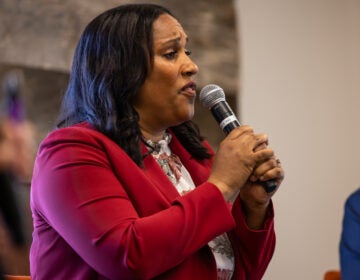Capitol recap: Pa. cities wait decades to get property values updated
Pennsylvania’s property valuation system is, arguably, the least regulated in the country.
Nearly all state governments either handle valuations themselves or require cities or counties to do them at regular intervals between one and 12 years, according to a survey by the International Association of Assessing Officers.
New York requires municipalities to maintain assessments within a certain range market value.
Just four states do not regulate in this manner.
California prescribes a 2 percent maximum annual increase (potentially offset by complex exemption rules) in assessed values.
There aren’t as many rules in Pennsylvania, New Jersey and Delaware. But Delaware verifies sales data. So does New Jersey, which also audits county assessor’s offices, according to a report by the Allegheny Institute. Pennsylvania counties can wait as long as they want, without answering to anyone, absent court intervention (there have been at least seven such cases since 1990: Allegheny, Chester, Erie, Dauphin, Lebanon, Lancaster, Washington).
Luzerne County did a reassessment on its own volition in 2009 — three years after the state Department of Community & Economic Development intervened in the distressed city of Nanticoke. (The city became the first in Pennsylvania to stabilize its finances through the Commonwealth’s Act 47 program last week).
Larger, long-acting economic forces clearly played a role there. But decades-old property values and a limit on tax rates (aka millage rate) exacerbated the situation. The combination eventually can leave municipalities with no or only marginal increases in revenue as union contracts, inflation and other forces drive up costs.
State law empowers third-class cities to do their own assessments. Pennsylvania Municipal League Executive Director Rick Schuettler says only Wilkes-Barre and Chester. Tax assessors and communications offices in both cities didn’t return call seeking to clarify when they through the process.
To help stabilize financially, Nanticoke adopted a home rule charter, which lets local officials tax at higher rates so revenue can grow even as property values stagnate.
The same thing happened in the distressed city of Altoona in Blair County, where there hasn’t been a reassessment in 57 years. The county is now doing one, expected to be effective in 2017.Franklin County’s next on the list at 54 years, but doesn’t have immediate plans to re-examine its property values.
They’re among a dozen counties — also including Bucks, Lackawanna, Northumberland and Juniata — where it’s been more than four decades. The statewide average is 22 years (versus 34 in Delaware and at least 11 in New York) according to an analysis by Keystone Crossroads.
Don Welker, head of the Commonwealth’s State Tax Equalization Board, blames political pressure.
Taxpayers bear the costs of the process itself (at least $1 million, typically), and the higher bills it yields (although state law limits the increases so they’re not too dramatic).
But the longer the county waits, the worse all that tends to be.
“If you wait 46 years, you kind of start from scratch, and it’s more time-consuming,” Welker says. “Doing it on a more regular basis, that can alleviate some of the extra work involved.”
Welker says state law also should set an interval. It would help “take the heat off the politicians,” he says.
The Allegheny Institute recommended three years in its report. That was in 2007. Two years later, the House passed a bill the Senate never acted on.
Editor’s note: Story has been updated to clarify property reassessment rules in New York and California.
Additional sources include the Connecticut Office of Policy and Management, Texas Comptroller of Public Accounts, California State Board of Equliazation, New Jersey Department of Community Affairs; Wise and Clarke counties, Va.; municipalities of Anchorage (Alaska), New Boston (New Hampshire) and Williston (Vermont); and departments of revenue in Oregon, Maine, New Hampshire, Georgia, Alabama amd Mississippi.
WHYY is your source for fact-based, in-depth journalism and information. As a nonprofit organization, we rely on financial support from readers like you. Please give today.






